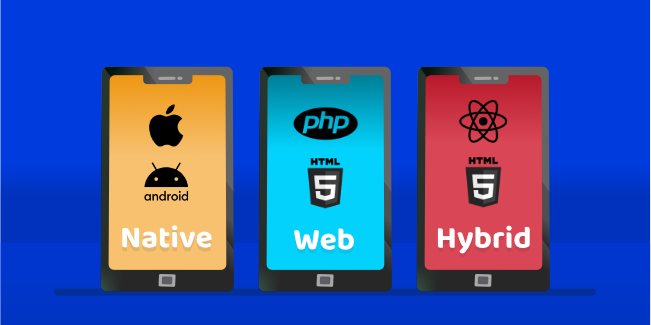Mobile Development
Business
Testing of Mobile Applications

Mobile application testing is a critical part of the software development life cycle. Tests allow you to detect errors and imperfections in the application, which is why the application must be tested on an ongoing basis as often as possible. The sooner an error is detected, the better because its removal will not affect the budget or deadline for completing the mobile application. But if the tests are not carried out on an ongoing basis, the risk of errors being detected only at the final stage of work increases. Then solving this problem almost always takes a long time, so it affects the time to market the application and costs a lot, affecting the entire project budget.
As a software development company, we understand the impact of application testing on your business. In this article, we will explain in depth why testing is necessary, discuss the most important types of testing, and point out the issues to keep in mind.
What is Mobile Application Testing?
Mobile application testing is the process of checking the correctness of a mobile application in terms of its functionality, usability, performance, and many other parameters. Mobile application testing helps verify that the application meets the expected technical and business requirements.
Teams must test apps across screen resolutions, operating system versions, and network bandwidths to successfully test mobile apps. It helps ensure that the app works flawlessly on multiple device configurations when released to the public.
Testing of mobile applications can be carried out through manual testing and automated testing. It is crucial to perform mobile app testing on an ongoing basis, at every stage of application development, and not just before the application is released to the market.
Why is Mobile App Testing Critical?

Creating a mobile app is a process that requires adequate human resources, time, and money. No wonder the goal of every software development team is to create a successful application. Meanwhile, the lack of testing dooms the application to fail. Testing helps to detect errors and shortcomings that must be removed before the application hits the market.
If mobile apps are not thoroughly tested, there is a high probability that users will encounter bugs that will affect the rating of the app and, consequently, removal. Research shows that as many as 80% of users uninstall an app that does not meet their expectations. And 48% of users uninstall or abandon an app if it's too slow. Even the smallest shortcoming or unexpected failure can lead to the immediate uninstallation of this application. It results in lost users and revenue.
If you're not testing the mobile user experience, you can't know how well your app meets user expectations. And that means that even if you want to improve the user experience, you won't know where to start. Not understanding this leads to app removals and poor reviews.
Mobile application testing ensures that the user experience is good, regardless of the type of mobile device or platform for which the application was developed.
How does App Testing Benefit Your Business?
The number of mobile devices and their users is constantly growing. It is predicted that by 2026 the number of mobile phone users worldwide will reach 7.5 billion. It is a double increase from 3.6 billion smartphone users in 2016. In addition, there are now over 9,000 different types of mobile devices. So it's no wonder every company wants their app optimized enough for that device to run smoothly. It can only be achieved by testing. Thanks to these, an application with minimum errors and a minimum abandonment rate will be created.
Mobile application testing helps verify the application's appearance, performance, and functionality on multiple devices. Optimizing your app for mobile OS combinations popular with your target audience helps ensure a seamless app experience regardless of device or operating system. It helps provide a solid and customer-centric experience for new users. In short, the better the user experience, the more likely you are to increase your reach.
Difference between Mobile App Testing and Web App Testing

Mobile applications are tested differently than web applications. It is due to the construction of these applications and how users use them.
Mobile apps are specifically designed to run on mobile devices. On the other hand, web apps reside on web servers and are accessible via web browsers. Mobile users interact with the app on various operating systems and devices with many standard resolutions and device-specific functionality. In addition, mobile users use mobile devices differently, as they mainly have a touch screen. Therefore, scrolling or zooming in on an element directly with the palm/fingers. The state and situations where mobile users use their devices should also be considered. If they do it on the subway or at the shop, they certainly have a different concentration than someone who is calmly at home using their desktop computer.
Therefore, mobile testing mainly consists of testing applications on multiple mobile devices, while web application testing focuses on checking the correctness of the appearance and functionality of websites in various browsers.
Our article "Web Development Testing - why is it important?" discusses more on testing web apps.
Types of Mobile Apps

The ways of testing a mobile application also depend on the type of application. There are 3 main types of applications, and each type needs to be matched with appropriate tests.
Native applications are designed specifically for a particular mobile platform (usually Android or iOS) and are typically downloaded and installed via an app store such as the Apple App Store or Google Play Store. It ranges from native apps built on Java/Kotlin for Android or Objective-C/Swift for iOS to cross-platform native mobile apps built with frameworks like ReactNative, Flutter, and NativeScript.
Mobile web apps are server-side applications that allow you to access websites on mobile devices using various browsers, such as Chrome, and Firefox, by connecting to a mobile network or wireless network. They can run on any mobile operating system or mobile device.
It is a combination of native and mobile web applications. Hybrid applications are developed using a mix of web technologies and native APIs. For this reason, hybrid apps may have some native functionality, but at the same time, they at least function as web apps wrapped in a native shell. They are economical and develop faster than native applications.
Types of Mobile App Testing
To check all aspects related to the operation of the application, many different tests must be carried out. Below you will find a list of the most popular types of tests used when testing mobile applications.
Usability testing is one of the UX research techniques that allows you to verify how users react to a given product, whether they can use it, what problems they encounter, and what they think about a given solution. Thanks to usability tests, you can check how easy the application is to use and whether it satisfies users.
Compatibility testing determines if an app is powerful enough to run across various browsers, databases, hardware, operating system, mobile devices, and networks. It happens (quite often) that the application is not compatible, e.g., with a specific type of mobile browser; you need to solve this problem as soon as possible.
Interface testing involves testing the app's menu options, buttons, tabs, settings, and navigation flow.
-
Low-level resource testing
It consists in checking memory usage, automatically deleting temporary files, and testing how the application copes with the growth of the local database.
Performance testing verifies the speed, response time, stability, reliability, scalability, and resource utilization of an application under a specific load.
They consist of testing the backups and the data recovery plan in case of battery depletion or data loss during the automatic update of the application.
Functional tests (otherwise known as black box tests) help to verify that the mobile application works as expected and according to the requirements specification. Interestingly, the tester does not know the structure and operation of the application tested. Application Functional Tests allow you to check many factors, such as the correct operation of a given function, user interface, API interfaces, and client-server communication.
They are used to check how the application behaves both during installation and uninstallation.
Data security is a crucial issue, which is why security tests are aimed at checking whether the data downloaded by the application is safe.
Manual Testing vs. Automated Testing

Manual testing and automated testing are other topics you need to explore and understand to manage application testing effectively.
Manual tests are performed solely by a human who checks the application and looks for problems the user may encounter. As a rule, they are very time-consuming, but it is not worth giving up on them because no tool can replace human input and experience.
On the other hand, automated testing is carried out using special tools that support the work of testers. Mobile test automation is much faster and is especially effective for repetitive tests, but it is worth remembering that it may miss less obvious cases that manual tests can detect.
It is impossible to indicate which type of test is worse or better because both have advantages and disadvantages. Whether you decide to use one type of test or two types of tests depends on the requirements of the application under the test.
Conclusion
Mobile testing is a significant challenge due to the huge variety of hardware and software commonly used today. However, due to the constantly growing number of smartphone users, the quality of mobile applications is now a key issue. Therefore, application testing should be done on an ongoing basis and include different tests and testing methods. And all this to increase the probability of error detection. It will help you get your app to market faster and deliver a great user experience.
As the best product development company, we have been developing mobile and web applications for many years. If you need help with testing the application or want to talk about your project, make an appointment for a free consultation with our specialists at a convenient time.